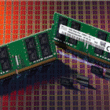Intel’s Future: Nova Lake and Its Impact on the Desktop CPU Market
In a recent announcement at the 2025 Deutsche Bank Technology Conference, Intel’s CFO, David Zinsner, revealed insights into the company’s strategic plans for its upcoming Nova Lake processor, set to launch in 2026. This next-generation CPU aims to revitalize Intel’s position in the high-end desktop market, a segment in which the company has faced challenges with its current Arrow Lake lineup.
Addressing Past Shortcomings
Zinsner candidly acknowledged Intel’s previous missteps in the desktop segment, particularly within the high-performance desktop category. He noted that both sales and shipments have not met expectations, largely due to a lack of competitive offerings in this space. However, he expressed optimism regarding the Nova Lake series, which promises a comprehensive SKU portfolio designed to cater to the high-end desktop market effectively.
"Nova Lake is anticipated to provide a more balanced array of products that can compete robustly with industry rivals," Zinsner stated. This development is crucial for Intel as it seeks to enhance its foothold in a market dominated by AMD and its competitive Zen architectures.
Anticipated Improvements in Client Business
Looking forward, Zinsner expressed confidence in the client business, suggesting that Intel is on an upward trajectory. While acknowledging some execution challenges, he emphasized that the company’s overall progress is positive. The introduction of Nova Lake is expected to not only bolster sales but also improve Intel’s market share against competitors.
"As we move into next year, I believe our position will strengthen, particularly with the launch of Nova Lake," he mentioned, indicating that Intel is poised for growth in the consumer desktop market.
Innovations in Server Technology
Beyond desktop CPUs, Zinsner also discussed advancements in Intel’s server technology. He highlighted the performance of the Diamond Rapids processors, noting that although they excelled in specific scenarios compared to AMD’s EPYC line, they have not fully met Intel’s expectations. As a result, Zinsner confirmed a strategic pivot towards multi-threading support, aligning with customer needs.
The upcoming Coral Rapids generation is being framed as a significant opportunity for Intel to regain competitiveness in the server market. Zinsner noted that this next iteration represents a substantial chance to enhance Intel’s offerings, especially as the company refines its product roadmap based on internal evaluations and customer feedback.
A Strategic Shift in Roadmap
With new leadership under Chen Liwu, Intel is undergoing a strategic reassessment of its developmental roadmap. Zinsner mentioned that necessary adjustments would be made to ensure that product offerings closely align with what customers truly require.
"Identifying gaps in our previous strategies is crucial to moving forward. We won’t repeat past mistakes, particularly in multithreading," he stated. This proactive approach aims to better cater to market demands, enabling Intel to provide products that offer greater value and improved energy efficiency.
Upcoming Innovations to Watch
In the next two years, Intel plans to launch two new client CPU architectures: Panther Lake and Nova Lake. On the server side, the company is gearing up for the introduction of Clearwater Forest (Xeon 7E) and Diamond Rapids (Xeon 7P). Notably, Diamond Rapids, Clearwater Forest, and Panther Lake will utilize Intel’s 18A manufacturing process, while Nova Lake will leverage a hybrid model developed with TSMC.
Coral Rapids is anticipated to debut in the 2027-2028 timeframe, promising to be a game-changer in Intel’s quest for domination in the server market.
Conclusion
As Intel prepares to roll out the Nova Lake processor, the company is positioned to rectify past shortcomings and reclaim its place within the competitive landscape of high-end desktop CPUs. With strategic adjustments and a renewed focus on customer needs, Intel’s future in both the desktop and server markets appears more promising than ever.
This essential evolution in Intel’s product offerings not only showcases the company’s commitment to innovation but also highlights its strategic pivot in response to market dynamics. As consumers and businesses alike anticipate these advancements, Intel is well on its way to redefining its trajectory in the tech industry.
Stay tuned for more updates as Intel gears up for an exciting era of technological advancements.




